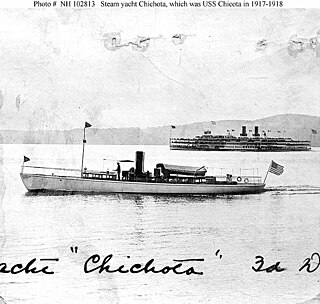
Eight ships of the United States Navy have been named USS Hornet, after the stinging insect:
USS Wasp may refer to the following ships of the Continental and United States navies:
Several ships of the British Royal Navy have been named HMS Boxer, named after the competitor in a boxing match.
Fifteen ships of the Royal Navy have been named HMS Chatham after the port of Chatham, Kent, home of the Chatham Dockyard.
USS Vixen may refer to the following ships of the United States Navy:

USS Lawrence was one of two 493-ton Niagara-class brigs built at Erie, Pennsylvania, by Adam and Noah Brown under the supervision of Sailing Master Daniel Dobbins and Master Commandant Oliver Hazard Perry, for United States Navy service on the Great Lakes during the War of 1812.

USS Niagara, commonly called the US Brig Niagara or the Flagship Niagara, is a wooden-hulled snow-brig that served as the relief flagship for Oliver Hazard Perry in the Battle of Lake Erie during the War of 1812. As the ship is certified for sail training by the United States Coast Guard, she is also designated SSV Niagara. Niagara is usually docked behind the Erie Maritime Museum in downtown Erie in the U.S. state of Pennsylvania as an outdoor exhibit for the museum. She also often travels the Great Lakes during the summer, serving as an ambassador of Pennsylvania when not docked. It was listed on the National Register of Historic Places in 1973 and was designated the official state ship of Pennsylvania by the Pennsylvania General Assembly in 1988.
Nineteen ships and a shore establishment of the Royal Navy have been named HMS Drake after Sir Francis Drake or after the drake:

USS Emeline (SP-175) was a yacht acquired by the U.S. Navy during World War I. She was outfitted with military equipment, including 3-inch guns, and was commissioned as a patrol craft, assigned to protect shipping in the North Atlantic Ocean. She saved the lives of survivors of shipwrecks, and provided escort protection from German submarines for commercial ships. Post-war she was sold to the highest bidder, who had the yacht sail to San Diego, California, for delivery.

USS Concord (SP-773), later known as USS Mendota (YT-33) and again later as USS Muscotah (YT-33) was a tugboat acquired by the U.S. Navy during World War I. Concord was initially assigned to North Atlantic towing duties, and later was assigned as harbor tug at the Washington Navy Yard. She was sold in 1937.

USS Margaret (SP-524) was a yacht acquired by the U.S. Navy during World War I. She was reconfigured by the Navy at Boston, Massachusetts and served as a patrol craft throughout the war. Post-war she was transferred to the War Department.

The sixth USS Niagara (SP-136), later PY-9, was a United States Navy patrol vessel in commission from 1918 to 1931 and which served during World War I.

USS Zara (SP-133) was a steam yacht that was built in Scotland in 1890, passed through a number of British, Canadian and US owners, and ended up as a passenger steamship in Greece after the First World War. She was renamed several times, becoming Solgar, Electra and finally Zoodohos Pigi. In the latter part of the war she spent a year as an armed yacht in the United States Navy.
USS Wandena (SP-354) was an armed motorboat that served in the United States Navy as a patrol vessel from 1917 to 1919.

USS Chichota (SP-65) was an armed yacht that served in the United States Navy as a patrol vessel from 1917 to 1918.

USS Apache (SP-729) was the first to be delivered of eight motor boats built by Herreshoff Manufacturing Company at Bristol, Rhode Island ordered and financed by members of the Eastern Yacht Club of Marblehead, Massachusetts. The boats were designed by Albert Loring Swasey and Nathanael Greene Herreshoff with the intention that the boats be used by the Navy as patrol craft and built with Navy approval of the design. Apache, as were the other boats, bore names under construction chosen by the owners and were then given the Section Patrol numbers on Navy acceptance and activation. The names were dropped after a period and all the boats then bore only the S.P. numbers.

The first USS Sabalo (SP-225) was a United States Navy patrol vessel in commission from 1917 to 1919. Following World War I, Sabalo was sold to private interests before returning to service as a patrol vessel in World War II, this time with the Royal Canadian Navy, renamed Cougar. Returning to private ownership following the war, the vessel sank in a hurricane in 1950.
This page is based on this
Wikipedia article Text is available under the
CC BY-SA 4.0 license; additional terms may apply.
Images, videos and audio are available under their respective licenses.










